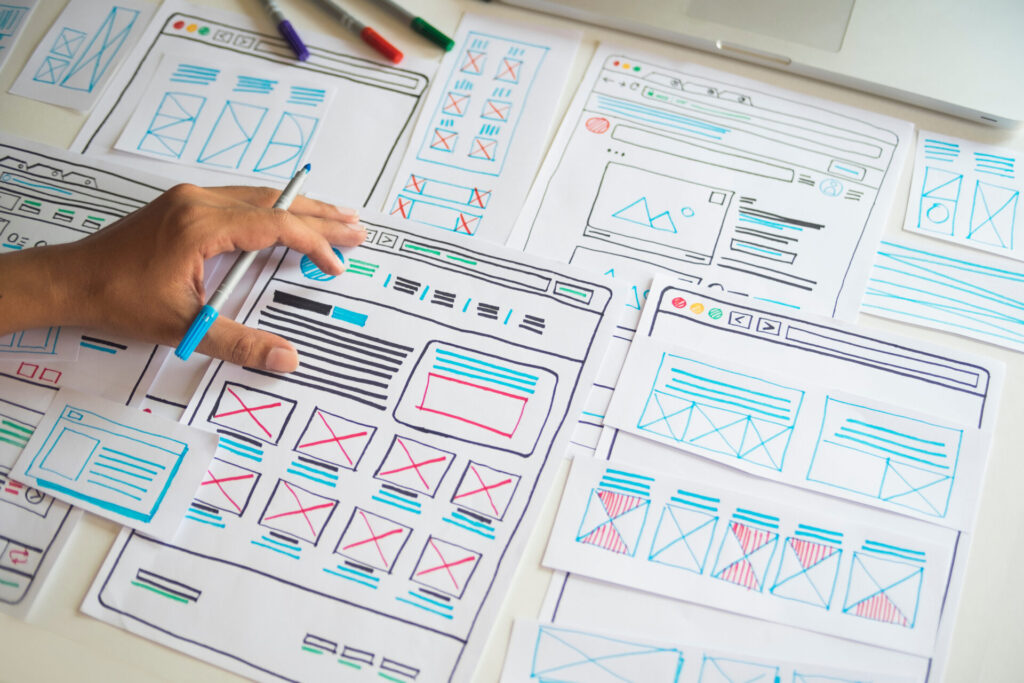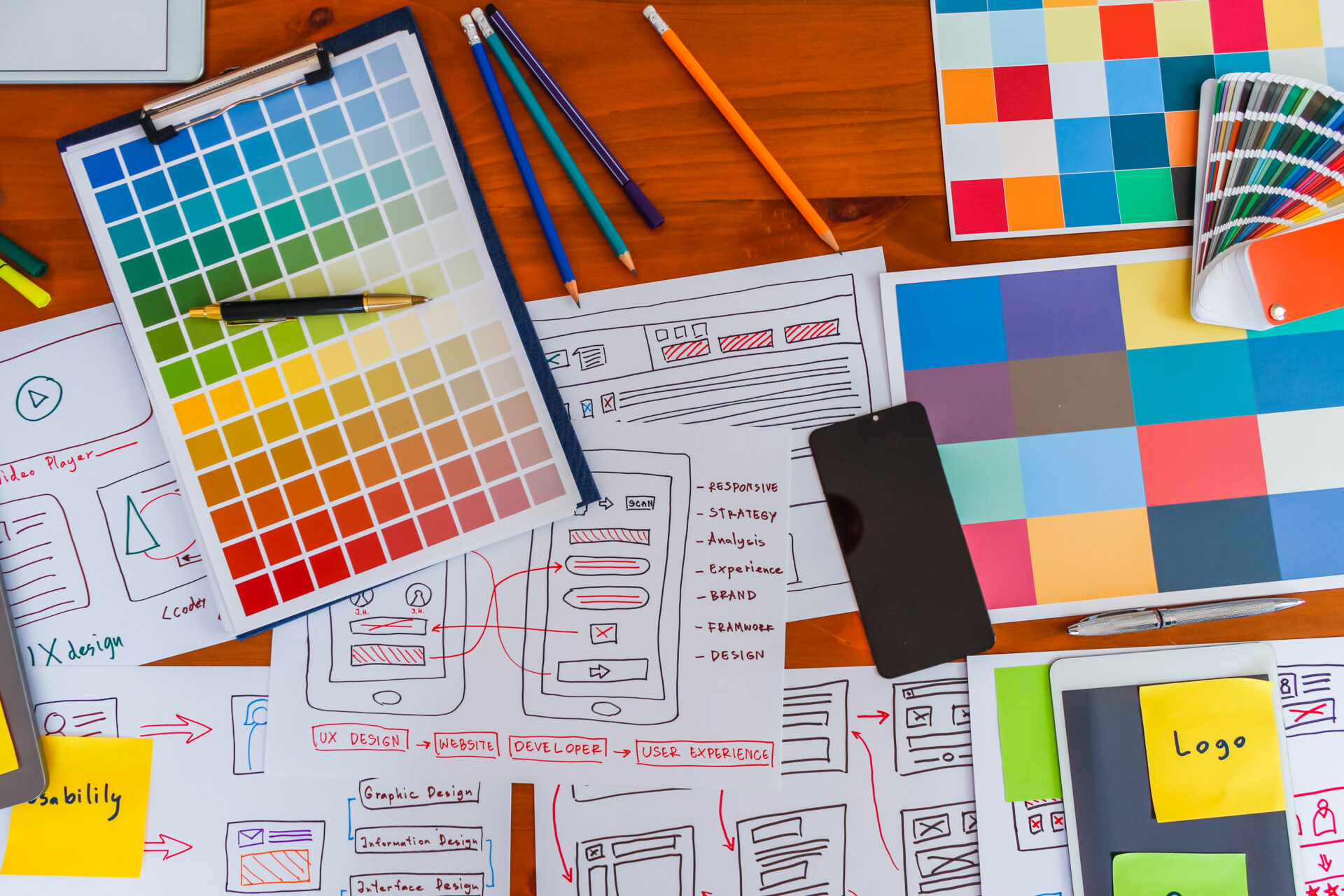In the realm of digital experiences, the interface serves as the gateway between users and the functionalities of a product or service. Crafting an effective user interface (UI) is not merely about aesthetics; it’s about creating a seamless journey that enhances usability, accessibility, and overall user satisfaction. This article dives into the intricacies of UI interface design, unraveling its essential elements and shedding light on best practices. From visual design to interaction principles and the imperative of accessibility, understanding the nuances of UI design is pivotal for businesses aiming to carve out memorable digital experiences. Join us as we explore the landscape of UI interface design, uncovering the strategies that underpin compelling user interactions and driving success in today’s digital ecosystem.
UI Interface Design: Bridging Users to Digital Experiences:
UI interface design functions as the vital link between users and the digital products and services they engage with. It encompasses a multifaceted process aimed at orchestrating a seamless interaction between users and the digital environment they navigate. At its core, UI design involves meticulously crafting various elements within the interface to optimize usability, accessibility, and overall user satisfaction.

Crafting Visual Elements: One of the primary tasks in UI interface design is the meticulous crafting of visual elements that populate the interface. This involves selecting and designing graphical components such as icons, images, buttons, and other visual cues that not only catch the user’s eye but also convey information effectively. Designers pay careful attention to factors such as visual hierarchy, typography, color schemes, and layout to ensure that the interface is visually appealing and easy to comprehend.
Structuring Layout and Navigation: Beyond visual elements, UI design also encompasses the structural layout and navigation of the interface. Designers carefully arrange content and interactive elements within the interface to facilitate intuitive navigation and seamless user interactions. This involves creating logical information architectures, organizing content hierarchies, and implementing intuitive navigation patterns that guide users through the interface effortlessly.
Optimizing for Usability and Accessibility: A central objective of UI interface design is to optimize the interface for usability and accessibility. Designers prioritize creating interfaces that are easy to use, regardless of the user’s level of technical proficiency or familiarity with the product. This involves conducting user research, usability testing, and incorporating feedback to refine the interface and address user needs effectively. Additionally, designers ensure that the interface is accessible to individuals with disabilities by implementing features such as keyboard navigation, screen reader compatibility, and color contrast adjustments.
Fostering User Satisfaction: Ultimately, the goal of UI interface design is to foster user satisfaction by creating interfaces that not only meet but exceed user expectations. Designers strive to create interfaces that not only fulfill functional requirements but also evoke positive emotions and engage users on a deeper level. This entails paying attention to details such as micro interactions, feedback mechanisms, and delighters that enhance the overall user experience and leave a lasting impression.
In essence, UI interface design is a multifaceted endeavor that requires careful consideration of various elements to create interfaces that resonate with users and facilitate meaningful interactions. By focusing on crafting visually compelling elements, structuring intuitive layouts, optimizing for usability and accessibility, and fostering user satisfaction, designers can create interfaces that serve as seamless bridges between users and the digital experiences they seek to engage with.
Key Elements of UI Interface Design:
1- Visual Design: Visual design constitutes a cornerstone of UI interface design, playing a pivotal role in shaping the aesthetics and overall presentation of the interface. At its core, visual design encompasses a range of principles and techniques aimed at enhancing the visual appeal and effectiveness of the interface in communicating with users.
2- Interaction Design: Interaction design involves designing the interactive elements of the interface, such as buttons, menus, forms, and animations. Designers focus on creating intuitive and responsive interactions that guide users through the interface and facilitate seamless navigation and task completion.
3- Information Architecture: Information architecture involves organizing and structuring content within the interface to facilitate easy navigation and comprehension. Designers prioritize logical information hierarchies, clear labeling, and intuitive navigation patterns to ensure that users can find the information they need quickly and easily.
4- Consistency and Familiarity: Consistency is crucial in UI interface design, as it helps users understand and predict how the interface will behave across different screens and interactions. Designers establish and adhere to design patterns, styles, and conventions to create a cohesive and familiar user experience.
5- Accessibility: Accessibility is an essential consideration in UI interface design, ensuring that interfaces are usable by all individuals, including those with disabilities or impairments. Designers prioritize accessibility features such as keyboard navigation, screen reader compatibility, and color contrast adjustments to ensure inclusivity for all users.

Best Practices for UI Interface Design:
1- Understand User Needs:
To design effective user interfaces, it’s crucial to begin by gaining a deep understanding of the needs, goals, and preferences of your target audience. This involves conducting comprehensive user research and analysis to uncover insights into user behaviors, motivations, and pain points. By empathizing with users and understanding their context, designers can tailor interfaces that resonate with their needs effectively. User personas, journey maps, and usability studies are valuable tools for gaining insights and informing design decisions, ultimately leading to interfaces that are intuitive and user-centric.
2- Keep it Simple:
Simplicity is key to creating user-friendly interfaces. To simplify the design, focus on stripping away unnecessary elements and extraneous features, and prioritize the core functionality and content that align with user goals. Avoid cluttered layouts and excessive visual noise, as they can overwhelm users and hinder their ability to navigate the interface. By adhering to the principle of simplicity, designers can enhance usability, improve task completion rates, and ultimately increase user satisfaction.
3- Prioritize Visual Clarity:
Visual clarity is essential for guiding users through the interface and effectively communicating information. Use clear and concise visual cues, labels, and feedback mechanisms to provide users with guidance and context as they interact with the interface. Ensure that important elements such as buttons, links, and interactive components are visually prominent and easily distinguishable from surrounding elements. Consistent use of visual hierarchy, typography, and color can help improve readability and comprehension, facilitating smoother user interactions.
4- Test and Iterate:
Usability testing and iteration are integral parts of the UI design process. Conducting usability tests allows designers to observe how real users interact with the interface, identify usability issues, and gather feedback for improvement. By iterating on designs based on user feedback, designers can refine and optimize the interface to enhance usability and user satisfaction continuously. Regular usability testing throughout the design process helps catch usability issues early and ensures that the final interface meets user needs effectively.
5- Stay Updated with Trends:
In the fast-paced world of UI design, staying abreast of the latest trends, best practices, and emerging technologies is essential. Keep a finger on the pulse of the industry by actively seeking out information on new design patterns, innovative techniques, and technological advancements relevant to UI interface design. Incorporate fresh ideas and trends into your designs while ensuring that they align with user needs and preferences. By embracing innovation and staying adaptable, designers can create interfaces that feel modern, relevant, and engaging to users.

Wrapping up “UI Interface Design“
As we navigate the ever-evolving landscape of digital experiences, the importance of crafting seamless user interfaces cannot be overstated. Through this exploration of UI interface design, we’ve uncovered the intricate tapestry of elements and practices that contribute to creating compelling digital interactions.
From visual design to interaction principles, information architecture, consistency, and accessibility, each facet plays a crucial role in shaping user experiences. By meticulously crafting visual elements, structuring intuitive layouts, optimizing for usability and accessibility, and fostering user satisfaction, designers can bridge the gap between users and the digital environments they navigate.
As businesses strive to carve out memorable digital experiences, understanding and mastering UI interface design principles are essential. By prioritizing user needs, simplicity, visual clarity, iterative testing, and staying abreast of emerging trends, businesses can create interfaces that not only meet but exceed user expectations.
In essence, UI interface design is not merely about aesthetics; it’s about creating meaningful connections between users and digital experiences. By embracing the art of UI interface design, businesses can forge pathways to success in the ever-evolving digital ecosystem, enriching user interactions and driving innovation in the process.
Until next time explore webkeyz’s case studies
and Keep Thinking!








